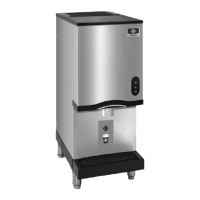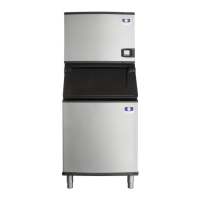Part Number 000015432 Rev02 5/21 91
Compressor Drawing Locked Rotor
To determine if the compressor is seized, check the amp
draw while the compressor is trying to start.
The two likely causes of this are a defective starting
component and a mechanically seized compressor.
To determine which you have:
1. Install gauge on high and low side.
2. Try to start the compressor.
3. Watch the pressures closely.
A. If the pressures do not move, the compressor is
seized. Replace the compressor.
B. If the pressures move, the compressor is turning
slowly and is not seized. Check the capacitors
and relay.
COMPRESSOR DRAWING HIGH AMPS
The continuous amperage draw on start-up should not be
near the maximum fuse size indicated on the serial tag.
Diagnosing Capacitors
• If the compressor attempts to start, or hums and trips
the overload protector, check the starting components
before replacing the compressor.
• Visual evidence of capacitor failure can include a
bulged terminal end or a ruptured membrane. Do not
assume a capacitor is good if no visual evidence is
present.
• A good test is to install a known good substitute
capacitor.
• Use a capacitor tester when checking a suspect
capacitor. Clip the bleed resistor off the capacitor
terminals before testing.
